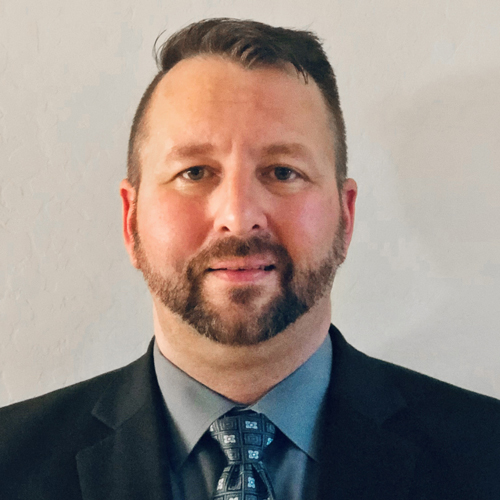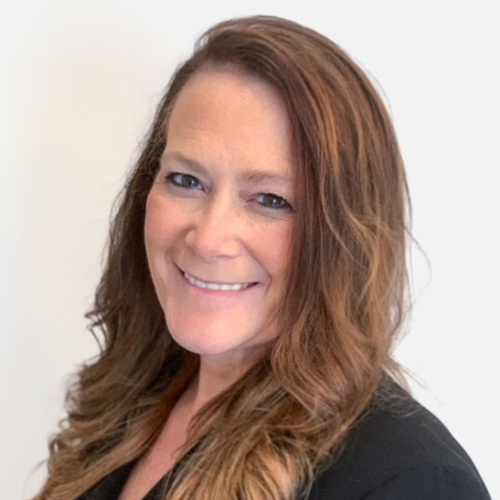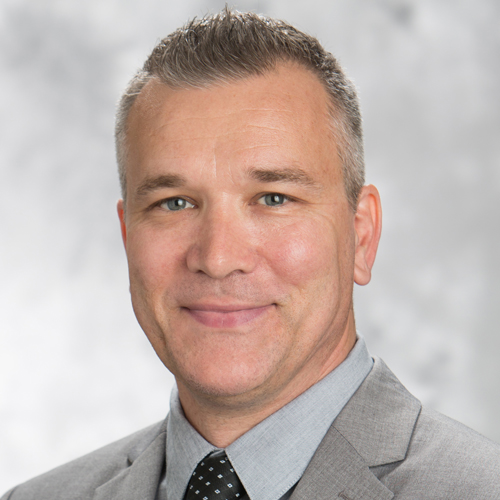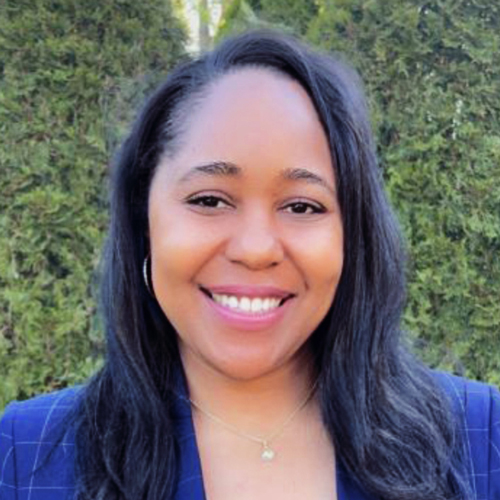Non-acute care facilities play a critical role in delivering care and reaching today’s patient population.
With those non-acute care facilities comes a host of unique challenges, and opportunities.
In the following article, The Journal of Healthcare Contracting would like to recognize some of the leading supply chain leaders in the non-acute care space, either for exclusive roles in a non-acute care specific supply chain team, or bridging non-acute care with traditional acute care supply chain.
Joseph Bates Director of Procurement, Supply Chain Shared Services / Innovation, HonorHealth
Mona Clark AVP, Strategic Initiatives, Ambulatory Quality, LifePoint Health
Eric Helliker Senior Supply Chain Services Non-Acute Program Director, Banner Health
Thomas Mullins MBA, CSCP, Purchasing Manager, St. Elizabeth Physicians
Dawn Wells Senior Director, Supply Chain, Northwell Health
A special thank you to McKesson for sponsoring The Journal of Healthcare Contracting’s 2021 class of Top 5 Health System Alternate Site Executives.

Joseph Bates
Director of Procurement, Supply Chain Shared Services / Innovation, HonorHealth
The Journal of Healthcare Contracting: Why do you believe non-acute, alternate site locations are vital to our nation’s health care?
Joseph Bates: Non-acute, alternate site locations help provide a full continuum of care for our health systems. Patients don’t have to go to the urgent care, or ER, if they have a primary care provider. The co-pays are a lot less, and it allows for value-based care where patients become familiar with care providers that offer an array of services.
We’ve also run into a lot of situations where a patient goes into a non-acute site and are referred to an acute location because of other underlying problems. So ultimately, it’s doing good for the patient that they’re able to go to a primary care physician office rather than a CVS to get their vaccine. Something we’ve also seen grow quite a bit through the pandemic is telehealth, which I think will start playing a bigger role in that non-acute care arena.
JHC: What are some keys to success for supply chain teams that may be unique to non-acute?
Bates: The biggest thing I’ve seen through the different organizations that I’ve worked with is the understanding that different leaderships within the non-acute area are key to moving initiatives forward. You typically have a medical group, but outside of that medical group you have different specialties, cancer centers, radiology, etc. Knowing those different leaders and being able to bring them together when needed to push your initiatives forward, and being able to communicate to those different groups, is key.
Many of the staff at non-acute sites are not supply chain professionals, so keeping the supply chain functions simple will also help promote success. As an example, our standard ERP is really more set-up for hospitals and larger acute sites, so I moved non-acute to a more user-friendly portal, which gives more of an Amazon type shopping experience with immediate order feedback, and self-service options. In surveys, the staff indicated they were excited about the change, because it was easy to use.
The other thing I’ve found helpful is using locked formularies to drive purchasing standardization and savings. This helps to narrow the scope of available products and increases compliance. It’s not just about putting formularies in; you must manage the formularies. I found the best way to do that is to set up the appropriate approval processes of formulary changes, when we can make exceptions (i.e., I need to buy this, but I don’t want to add it to the formulary). So allowing for those one-time purchases, but also teaming with the sourcing teams to review for opportunities where we can bring in more savings. Again, just simplifying the supply chain processes using analytics to monitor item usage, order efficiency, and variances to help assure continued success.
JHC: What have you and your team learned about navigating today’s most pressing disruptions to the supply chain?
Bates: My primary role is director of procurement, and I also manage the non-acute sites. I found managing backorders and allocations in a pandemic takes a lot more resources than we were prepared for two or three years ago. Getting the right reports together to help monitor these issues has been helpful. It was evident that non-acute allocations were impacted sooner than what we saw at the hospitals. When we started running into PPE issues early on, it was hitting the non-acute sites a lot faster than it was hitting the acute side.
That was amplified because of our continued growth, even during the pandemic. For instance, we doubled infusion beds for cancer treatments, so dealing with the allocations for those increases at the same time became challenging.
Then just looking at alternate sourcing, your tier two and tier three suppliers, and who’s going to be your best partner. At HonorHealth we had a need to create a warehouse to bring in additional supplies to help out the non-acute and acute locations, to assure we had the products that we needed to care for the patients and to protect our providers too. In addition to finding ways to purchase our different products, we found value in creating an outlet for the clinical users to report concerns with daily huddles. In our daily meetings we would have all the non-acute locations on a call. We asked questions like: “What are your barriers?” “Are you looking at any products that you may be running low on?” With them not having a perpetual inventory, their inventory level is out of sight, unless we’re talking to them on a daily basis and giving them easy access to supply chain. So that communication really helped.
JHC: Has the perception/integration by executive leadership of alternate sites within a health system or IDN changed in the last few years? If so, could you explain?
Bates: In the last two organizations I’ve worked for there has been an increase in importance and growth of non-acute locations. The way that’s communicated has been different in both, but ultimately, it’s about attracting patients, making sure you’re taking care of them in the non-acute setting, and then when they do need acute care, the non-acute locations refer them to our hospitals. So we’re keeping the patient within our system so that we can give them the best care possible.
Not only have we seen growth and focus, I think we’re also seeing some strategy changes with telehealth. It’s ultimately giving patients easier access to care.
JHC: What project or initiative are you looking forward to implementing now or in the near future?
Bates: I started at HonorHealth just before the pandemic, and worked on a project of moving the non-acute to a different platform for ordering, to give them a user-friendly Amazon type shopping experience. When the pandemic hit, it delayed things. But now I’m looking forward to using the tools that this new platform gives us: looking at order efficiencies, looking at opportunities for savings, and tying down those formularies and using those formularies to drive savings opportunities or to create standardization. And then working with the non-acute clinical staff to find better ways to track inventory, and give us more visibility to some of those products that we lost sight of over the last couple of years amid the pandemic.

Mona Clark
AVP, Strategic Initiatives, Ambulatory Quality, LifePoint Health
The Journal of Healthcare Contracting: Why do you believe non-acute, alternate site locations are vital to our nation’s health care?
Mona Clark: LifePoint Health’s mission is Making Communities Healthier. This mission is not just about caring for patients when they are ill, but it also reflects a commitment to caring for individuals when they are well and partnering with them to protect and enhance their overall health. Non-acute locations, like our physician practices, allow for relationships to form and conversations to take place about how each patient can maintain or improve his or her health. Preventative screenings for certain cancers start in the non-acute locations, and when the cancer can be diagnosed and treated early, the outcomes are much better. Our practice locations make significant contributions to the health of their communities and have never been more important to the overall health of our nation.
JHC: What are some keys to success for supply chain teams that are unique to non-acute?
Clark: The complexities of the non-acute space are unique in that they are often comprised of varying groups of providers who are serving communities and offering multiple levels of care across many specialties. Our markets are primarily in smaller communities, and the practices within those markets may cover a large geographical area. These locations can have logistical challenges that need careful analysis, so we are working effectively and efficiently to get supplies to the locations when they need them. Partnering with our non-acute distributor, McKesson, has been crucial in understanding the complexities each location may encounter, and their willingness to work through those challenges has been hugely helpful.
JHC: What have you and your team learned about navigating today’s most pressing disruptions to the supply chain?
Clark: The last couple of years have been an unprecedented time, and disruptions have been challenging to predict and sometimes impossible to avoid. The ability to be flexible, nimble and pivot our strategy as the environment changes has been extremely important to our ability to limit the impact to our physician practices and, ultimately, our patients. We have learned that having a close partnership with our distributor helps us stay abreast of trends and forecasts in the industry so we can evaluate the potential impact and act accordingly.
JHC: Has the perception/integration by executive leadership of alternate sites within a health system or IDN changed in the last few years? If so, could you explain?
Clark: The landscape of alternate sites is constantly changing as more services move away from the acute care setting. This shift in healthcare has made the non-acute sites a key area of focus for our leaders as we strive to meet the future needs of the patients and the communities we serve. The pandemic has also strongly emphasized the value of single, enterprise-wide vendor contracts for standardization, clinical quality, and to best leverage supply and market share.
JHC: What project or initiative are you looking forward to implementing now or in the near future?
Clark: We have a couple of exciting projects planned for this year centered around supply chain standardization and optimization that are focused on improving quality, maximizing contract values, and reducing variability across the enterprise. The first project is around formulary standardization, which will reduce costs and better align our practices. The second is a laboratory testing initiative, which will increase the testing availability in our physician practice space, reducing the number of hand-offs and the potential for delays in care. As an organization, we are always looking for ways to positively impact quality and patient safety, and I am looking forward to the evolving opportunities that arise to do so.
About LifePoint Health
Brentwood, Tennessee-based LifePoint Health is a leading healthcare provider that serves patients, clinicians, communities and partner organizations across the healthcare continuum. Driven by a mission of Making Communities Healthier, the company has a growing diversified healthcare delivery network comprised of more than 50,000 dedicated employees, 63 community hospital campuses, more than 30 rehabilitation and behavioral health hospitals and 170 additional sites of care, including managed acute rehabilitation units, outpatient centers and post-acute care facilities. Through its innovation strategy, LifePoint Forward, the company is developing meaningful solutions to enhance quality, increase access to care, and improve value across the LifePoint footprint and communities across the country.

Eric Helliker
Senior Supply Chain Services Non-Acute Program Director, Banner Health
The Journal of Healthcare Contracting: Why do you believe non-acute, alternate site locations are vital to our nation’s health care?
Eric Helliker: Non-acute care sites offer patients a “one-stop shop” with a wide array of service lines that include family medicine, orthopedics, and women’s services. Non-acute care sites also offer imaging and lab services, so when providers order lab work or X-rays, the patient won’t have to drive to multiple locations to have those diagnostics performed; they can simply take a walk down the hall. Essentially, non-acute care sites make healthcare easier for the patient, so life can be better.
Non-acute care locations were also vital during the pandemic, offering another point-of-care location for COVID testing, vaccinations, and monoclinal therapies to help ease some of the pressure on the nation’s overburdened hospitals.
JHC: What are some keys to success for supply chain teams that may be unique to non-acute?
Helliker: A health system may have numerous non-acute care locations spread throughout one state or multiple states. This presents a communication challenge. As an example, in an acute facility, if there is an issue on a unit, you could walk over and speak with someone in-person. In the non-acute care space, you must effectively communicate through email and by phone to solve issues from 1 to 100 miles away. For instance, we had to stand-up multiple COVID testing sites in different states and work by Microsoft Teams or phone meetings to identify our customers’ needs. We also needed to identify vendors in states that could provide tents and other rental equipment and supplies. It was quite a task.
JHC: What have you and your team learned about navigating today’s most pressing disruptions to the supply chain?
Helliker: I think we have learned that it helps to have your own distribution center (DC). Our DC was a major lifeline for our non-acute locations in the early days of the pandemic, and it continues to support us today, as we are still facing the ramifications of a fractured global supply chain. We secured several PPE items in our DC, which in turn could be distributed to our end-users when our normal distribution channels began to rapidly breakdown. Very early on it became necessary to have multiple distributors for equipment as well as supplies.
JHC: Has the perception/integration by executive leadership of alternate sites within a health system or IDN changed in the last few years? If so, could you explain?
Helliker: I believe hospital and health system leaders have seen how extremely valuable and important non-acute locations truly are to the communities they serve, as well as across the entire healthcare continuum. A testament to that fact is that our number of alternate sites continue to grow year over year.
JHC: What project or initiative are you looking forward to implementing now or in the near future?
Helliker: We will be working extensively over the next several months to reduce the number of items on our current non-acute formulary. Identifying the right supplies at the right price point will drive cost savings and help improve our bottom line.

Thomas Mullins
MBA, CSCP, Purchasing Manager, St. Elizabeth Physicians
The Journal of Healthcare Contracting: Why do you believe non-acute, alternate site locations are vital to our nation’s health care?
Thomas Mullins: Non-acute, alternate site locations are vital to our nation’s healthcare because these are the teams who serve patients for ongoing and long-term health treatment. The focus must be maintaining good health, not just treating sickness. As a patient-centered organization, St. Elizabeth Physician’s goes above and beyond to provide our patients access to the best healthcare and experience in effort to become one of the healthiest communicates in America. To aid our efforts in delivering this quality care, we are focused on introducing innovative treatments, technology, and processes to improve the overall health and wellness of our region. We would not be able to impact a patient’s overall health and well-being without our non-acute, alternate site locations as a resource for our communities.
JHC: What are some keys to success for supply chain teams that may be unique to non-acute?
Mullins: In non-acute settings, there is no one-size-fits-all model. Due to the complexity and fragmentation across the many care settings, supply chain teams play a vital role in leading organizational change and executing initiatives to achieve key goals. To succeed, leaders must manage their operational model to meet the specific need of the individual care setting. This includes vendor and product standardization, ensuring cost-saving opportunities, staff efficiency, and providing consistent quality of care. It’s common for non-acute sites to have different technology than the hospital, having connectivity across the supply chain is critical in automating, monitoring compliance, and having strategic cost management. Implementing a strategic cost management effort can lead to better financial, clinical, and operational performance. Through medical/surgical, pharmaceutical, equipment, and lab, supply chain teams should help manage the product and process. These teams are key to involving necessary stakeholders to ensure the best product, application, and utilization is met through necessary training and approval.
JHC: What have you and your team learned about navigating today’s most pressing disruptions to the supply chain?
Mullins: The key to navigating today’s most pressing disruptions to the supply chain is collaboration. In order to have a healthy and agile supply chain, we work with other departments and organizations to meet the needs of the customers and patients. Keeping an open line of communication with our stakeholders to depicting accurate inventory management. By utilizing our supplier and distributor’s expertise for example, we’re able to leverage their information on usage history, current and upcoming supply chain shortages, and allocation changes. This allows our team to analyze ordering trends, set appropriate par levels, and structure an ideal formulary compliance. We have gained much better understanding of quality over cost through the disruptions to supply chain. Although it is advantageous to make purchasing decisions based on GPO compliance or best cost, we factor in delivery, storage, and service into our operations. By establishing a project plan and aligning with our partners, we utilize a one-voice approach to have greater visibility to deliver better care.
JHC: Has the perception/integration by executive leadership of alternate sites within a health system or IDN changed in the last few years? If so, could you explain?
Mullins: Adaptation to process planning, project management, and stakeholder alignment has been crucial to the success of our health system. Seeking out experienced non-acute information and assessments of operations has assisted in process automation, standardization, and allowed our team to make more informed decisions. By streamlining processes across non-acute care settings, the whole health system benefits from better cost management and improved patient care. For example, during the COVID-19 pandemic, in-person care declined, in favor of telemedicine services. However, satisfaction with care delivery rose. Healthcare supply chain’s future will be extended past the walls of in-patient/out-patient care to wherever the patient is physically located. As we gain a better understanding of practice patterns, new research and care delivery innovations will enhance patient outcomes. It will be important to further develop technology and skills to enhance opportunities for optimizing treatments based on clinical guidelines.
JHC: What project or initiative are you looking forward to implementing now or in the near future?
Mullins: We have implemented and continue to evolve our inventory system with our distribution partner, McKesson. As providers and suppliers work toward the mutual goal of improved patient care, we continue to find better ways to align incentives to succeed. The value of clean, accurate data in healthcare is not only transactional, but should be leveraged business wide to understand where the real value lies. By utilizing data, supply chain professionals can better anticipate what will be needed and not falter to product discontinuation or backorders.
Our future path leads to continue having a clinically integrated supply chain, where we work closely and side by side with our physicians. Working closely with our team to provide guidance, support, and knowledge on product price points, outcomes, and alternatives. Allowing for continuous improvements, idea sharing, and comparing products/outcomes to make informed decisions. As supply chain continues to grow as a pillar of the organization, our efforts to focus on standardizing care must continue to be consistent from a patient perspective. Implementing and leading change to help determine not only the best price, but the best outcomes, will help change long-standing inefficient processes.
About St. Elizabeth
Home to more than 10,000 associates and a medical staff of nearly 1,200 physicians and advanced practice providers, St. Elizabeth is deeply rooted in the communities it serves. St. Elizabeth has six facilities currently operating throughout Northern Kentucky and Southeastern Indiana – Covington, Dearborn, Edgewood, Florence, Ft. Thomas and Grant – as well as 169 St. Elizabeth Physicians specialty and primary care offices located throughout Kentucky, Ohio and Indiana.

Dawn Wells
Senior Director, Supply Chain, Northwell Health
The Journal of Healthcare Contracting: Why do you believe non-acute, alternate site locations are vital to our nation’s health care?
Dawn Wells: Non-acute and alternate site locations are vital to healthcare because they provide access to preventative medicine to all communities, including those that have suffered from barriers to quality care. It allows healthcare organizations to meet the patient where they are and realize greater impact on communities to achieve health equity. As health systems and IDNs continue to expand their footprint into non-acute care, patients can benefit from a continuum of care that is coordinated across several specialties. Northwell Health’s shared services model allows for our supply chain to coordinate with both clinical and non-clinical leadership to make sure that we are meeting the needs of our physicians, patients, and the communities we serve.
JHC: What are some keys to success for supply chain teams that may be unique to non-acute?
Wells: Communication, collaboration, and flexibility are all keys to success in the non-acute supply chain space. Northwell Health’s ambulatory and physician office network is comprised of 14+ specialties spanning over 830 locations. These locations are a mix of single provider physician practices, multi-site/multi-specialty groups, imaging centers, oncology centers, ASCs, hospice, and more.
One of the first actions we took to improve communication was to charter a Value Analysis Team (VAT) with regional and service line representation as well a physician advisory oversight group. The VAT has served as a conduit for multiple savings initiatives, and process improvements while allowing for the promotion of activities across the ambulatory network. The VAT also promotes collaboration between practice management, clinical leadership, and supply chain to support the continuum of care from inpatient to outpatient.
Collaboration with both internal and external stakeholders is another key to success. Over the years we have created strategic relationships with key vendors to provide support for our non-acute locations which allows ease of ordering and supports the procure-to-pay model outside of our system ERP.
Flexibility is also a major component in achieving success in non-acute operations. Historically, healthcare supply chain has been hospital based, which focuses on contracting and group/bulk purchasing. Understanding the nuances of purchasing in low unit of measure, class of trade restrictions and GPO rostering are all critical components to success and require a great amount of flexibility to support clinicians and patients.
JHC: What have you and your team learned about navigating today’s most pressing disruptions to the supply chain?
Wells: COVID and current supply chain disruptions have forced IDNs to adjust to a rapidly changing environment. Historically, we have been able to maximize savings by tightening formularies and utilizing on demand sourcing. We learned that we needed to be more flexible with our product and vendor selection and make sure that alternatives are always available to meet the needs of our physicians. Through our value analysis clinical teams, we have created and continue to manage substitution lists. We also understand how important it is to have full transparency of our suppliers and their sourcing methods and to have open lines of communications. We have increased the days of supplies on hand at our Integrated Distribution Center, which allows our distribution center to support our non-acute locations for back ordered items when necessary. We were lucky to have a mature vendor and supplier risk management team and that allowed us to more quickly assess new suppliers that came into the marketplace. Our existing efforts around sustainability, supplier diversity, and impact spending allowed us to quickly partner with local suppliers.
JHC: Has the perception/integration by executive leadership of alternate sites within a health system or IDN changed in the last few years? If so, could you explain?
Wells: Executive leadership at Northwell Health has been very intentional with the integration of the ambulatory and physician practice enterprise. Very early on in our journey, business development assembled a transitions team to coordinate cross functional activities related to practice acquisitions and new facility openings. Each acquisition and site opening is assigned a project manager who works closely with a member of my team to track and coordinate all integration activities. This methodology, supported by senior leadership, has been instrumental in informing our team growth and organizational operations.
JHC: What project or initiative are you looking forward to implementing now or in the near future?
Wells: I am absolutely looking forward to supporting the continued growth of our ambulatory network in many different areas. We are relaunching many of our VAT activities that were put on hold due to COVID and I am looking forward to working with our teams to achieve savings and create processes to align our non- acute facilities to our GPO agreements. I am extremely excited about our sustainability and supplier diversity program. We are embarking on an initiative to “green the ambulatory” which will serve as an opportunity to align with system initiatives around the health impacts of climate change. I am a champion for supplier diversity and have been very lucky to lead and grow our supplier diversity programs for the past 10 years. Expanding our geographical footprint puts us in a position to very intentionally engage with suppliers that reflect the communities that we serve, and in doing so, we can have an economic impact on the communities that need it the most.
